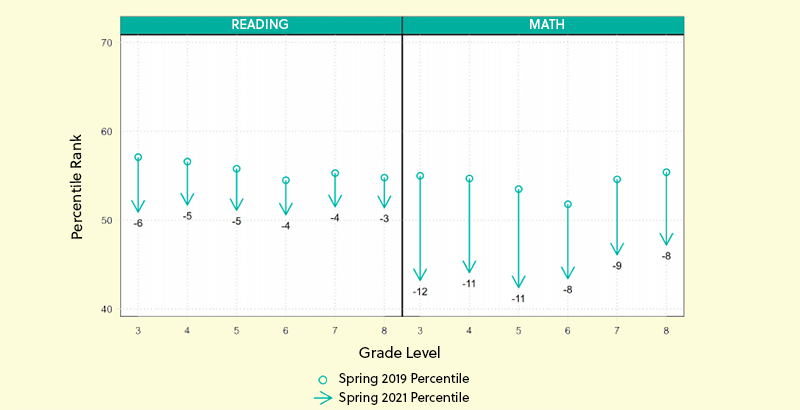State of Play: What Researchers Know — and Don’t — about Enrollment Declines and Learning Loss as School Year Gets Underway

Get stories like this delivered straight to your inbox. Sign up for The 74 Newsletter
With the new school year getting underway, researchers are adamant that data gathered during the 2020-21 academic year lends new urgency to warnings they first sounded in the early days of the pandemic. Already behind academically, low-income students and children of color are increasingly disengaged from school and losing ground — especially in math and in early grades.
More alarming, the most disadvantaged children were also much less likely to take last spring’s assessments, suggesting that educators don’t yet have any idea how much learning loss their students have suffered. Indeed, a year and a half after COVID-19 forced nationwide school closures, it’s not clear how many students have disappeared from classrooms, are now homeschooling or will opt to learn remotely in the coming school year — if distance learning is even an option.
Even as the COVID-19 Delta variant and subsequent battles over school mask and vaccine mandates threaten the hoped-for return to normalcy, these mounting — and widely varying — losses in learning and enrollment should top education leaders’ agendas, researchers say.
“Our mantra, what we were trying to convey as a big picture point in [our recent] policy brief, is that the spending of American Rescue Plan funds should really reflect the disproportionate impact,” says Lindsay Dworkin, vice president of policy and advocacy at the nonprofit assessment company NWEA, which did some of the initial research on likely learning loss. “So we would call on states and districts to spend their funds in ways that support the students who need that support the most.”
Some key data points:
- Third-graders in high-poverty schools who scored at the 39th percentile in math on NWEA’s MAP test in spring 2019 lost 17 points in spring 2021; higher-income students, who had averaged at the 70th percentile, lost just 6 points.
- 22 to 25 percent of students of color and low-performing students did not show up for the test this past spring. NWEA researchers fear their academic losses are even more dramatic than those of low-income students who took the tests.
- Just 9 percent of students in grades 2 through 8 in Newark scored well enough on the MAP to be considered at grade level, according to Chalkbeat.
- In Texas, grade-level mastery on the end-of- year STAAR exam fell to 35 percent, down from 50 percent in 2019.
- In Indiana, fewer than 29 percent of students passed both the state math and reading tests.
- In Tennessee, 1 in 5 Black students and 1 in 4 Latinos scored at grade level on end-of-year exams, as did 16 percent of English learners and only 7 percent of students with disabilities.
- Learning losses were smaller where there was more in-person schooling.
- Enrollment dropped 3 percent nationally and by 13 percent among preschool and kindergarten students, according to the Center on Reinventing Public Education, while absenteeism increased.
- In 33 states, 10,000 schools lost at least 20 percent of their kindergartners, and more than 1 million public school students did not enroll overall.
- The number of students homeschooling in Indiana nearly doubled, to 21,000, or 2 percent.
- The number of Black families homeschooling increased 500 percent, according to U.S. Census data, rising from 3.3 percent to 16 percent.
- Wisconsin saw its largest increase in homeschooling since 1984, with 32,000 students now learning at home.
Get stories like these delivered straight to your inbox. Sign up for The 74 Newsletter

;)
